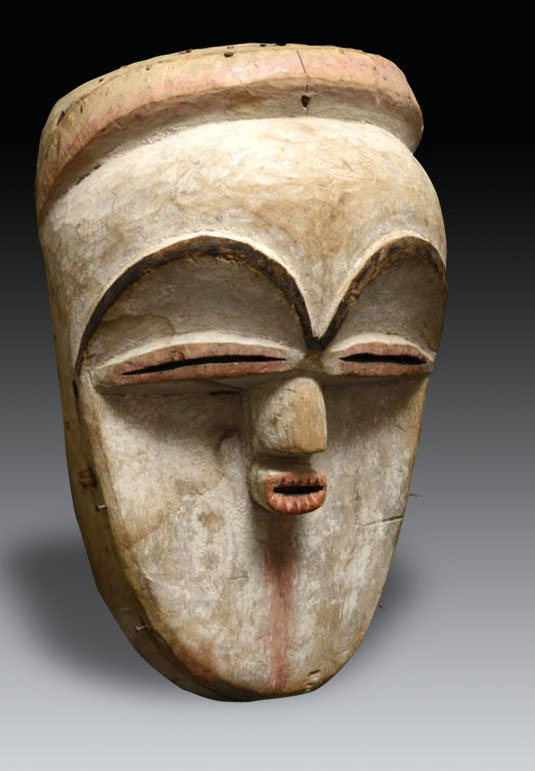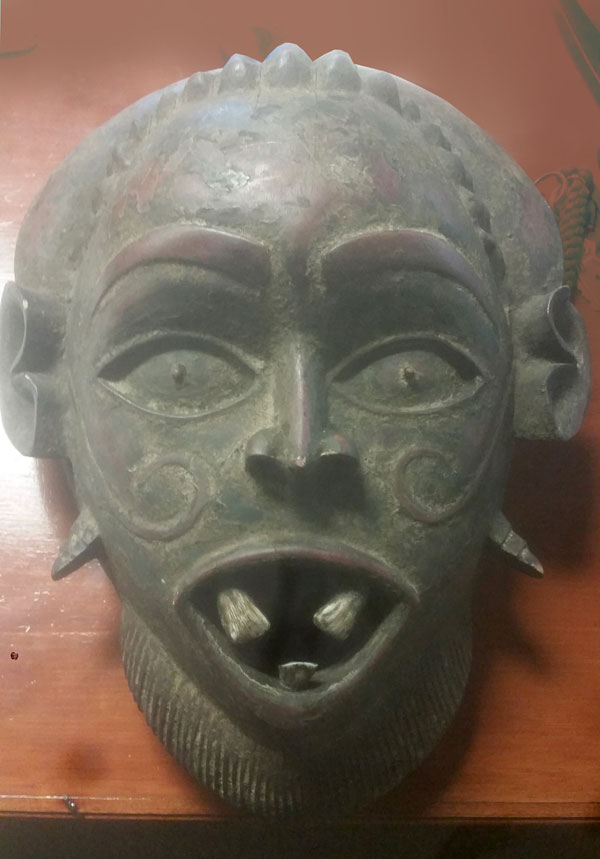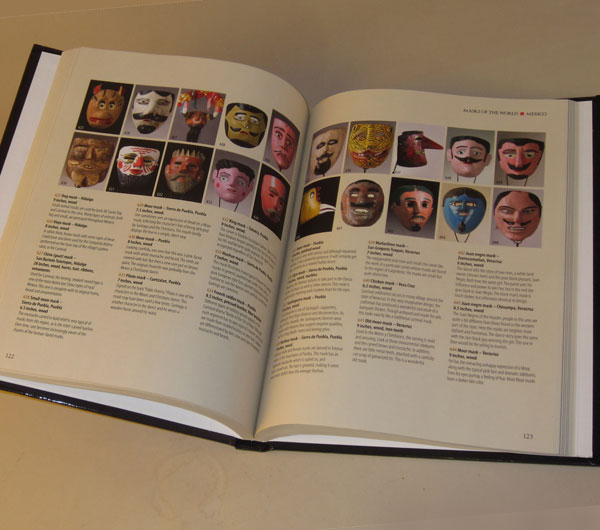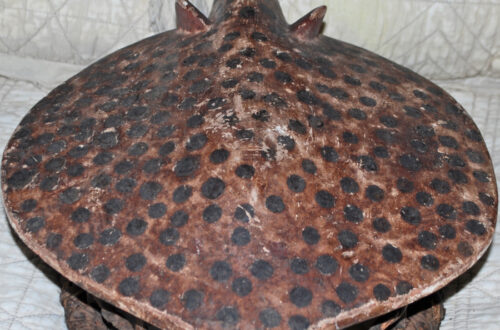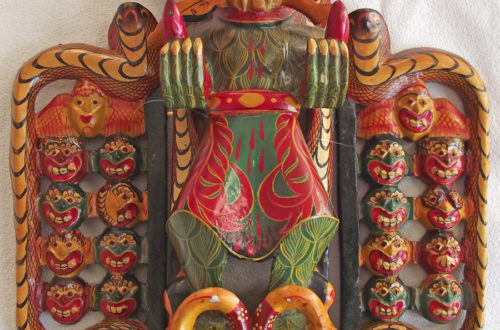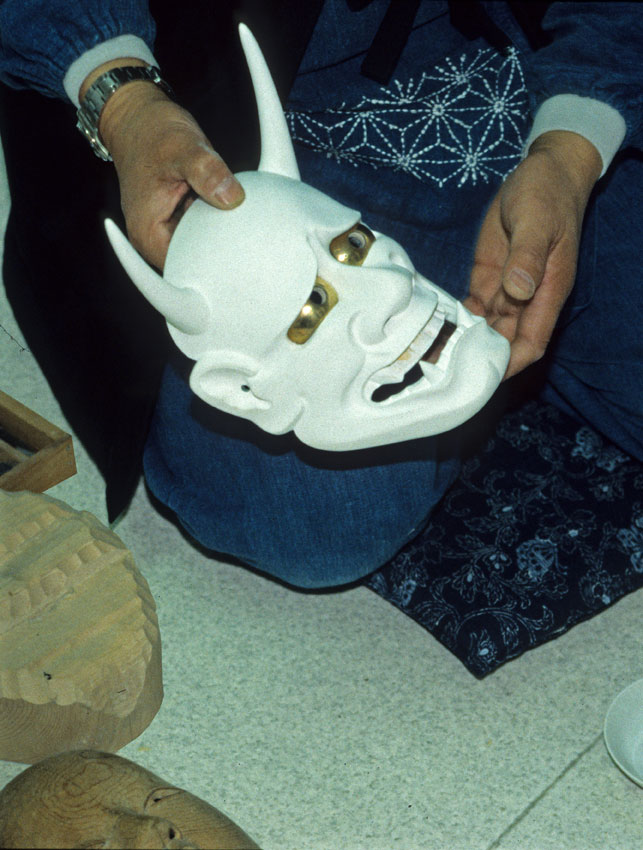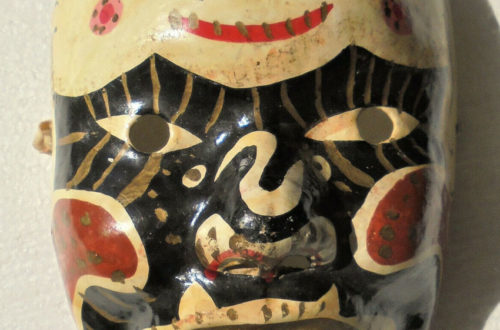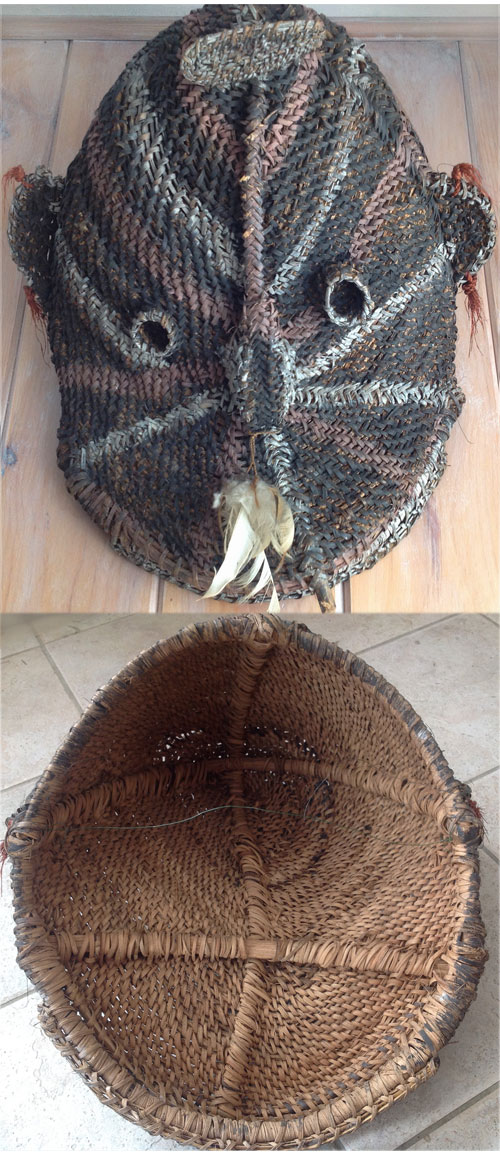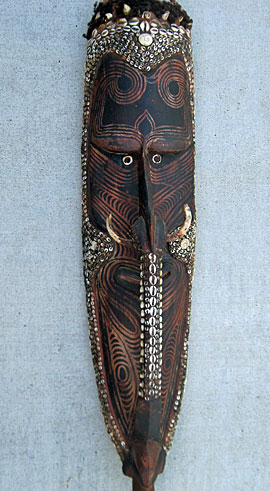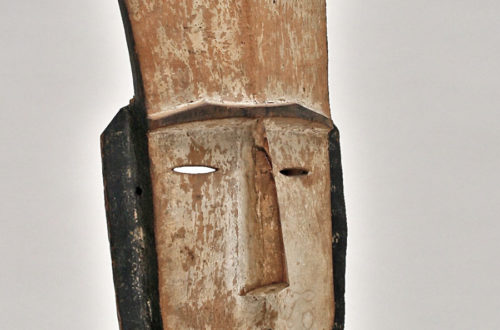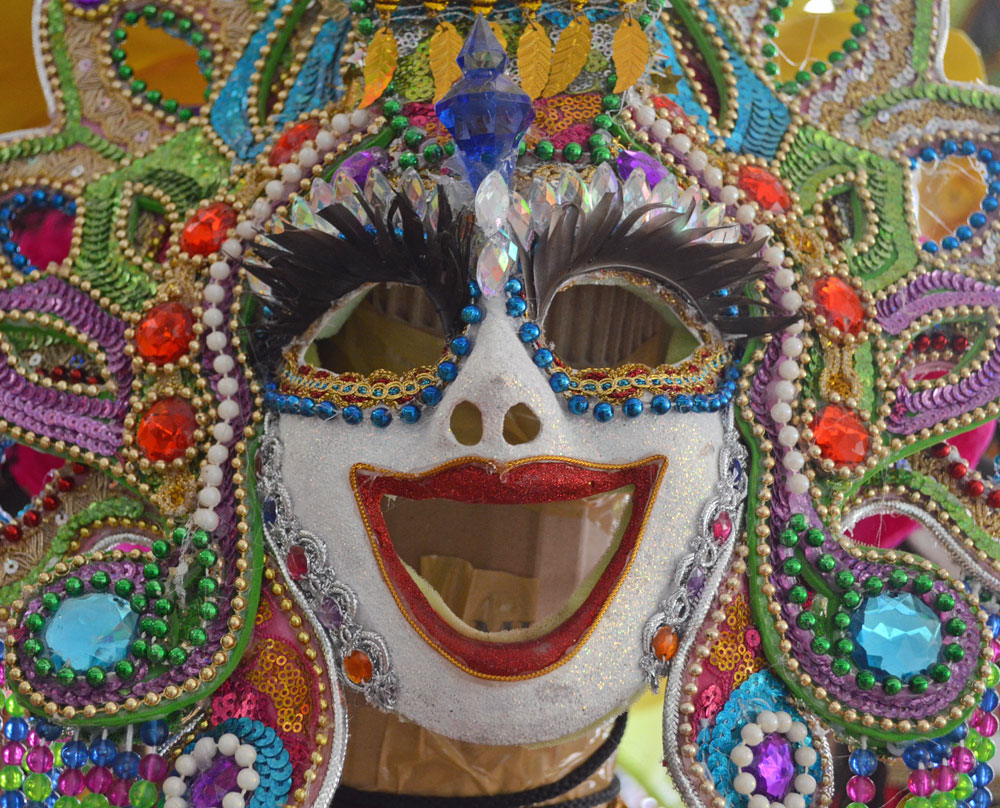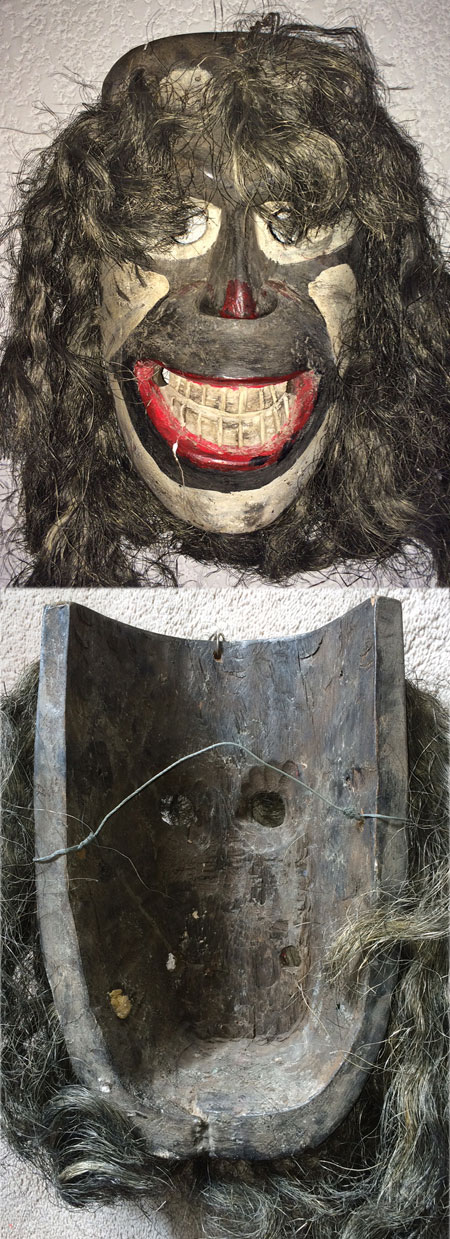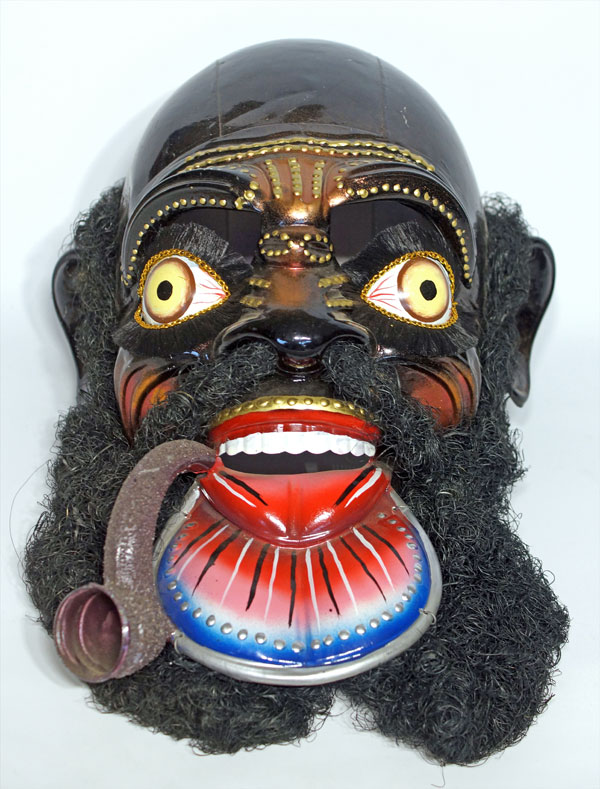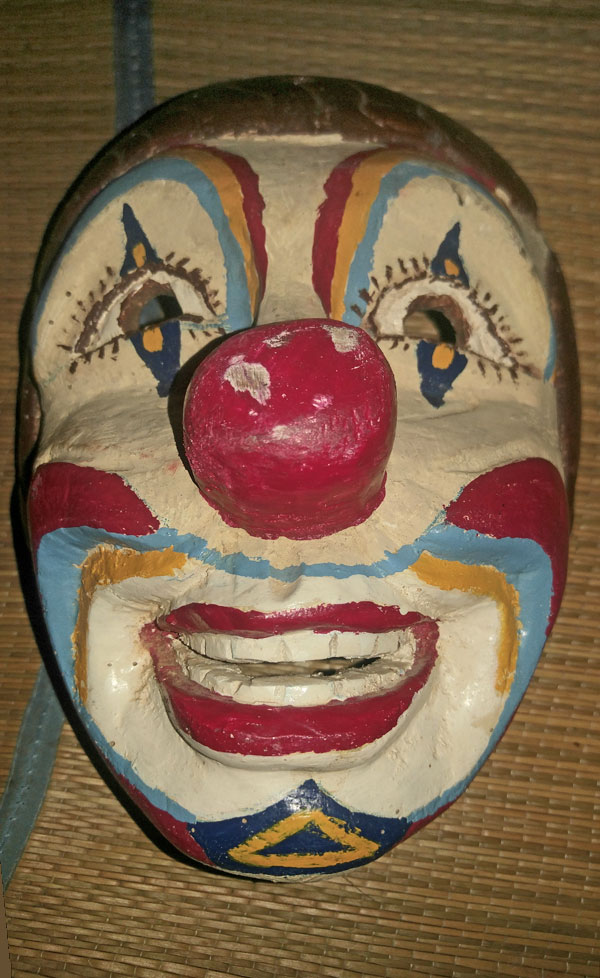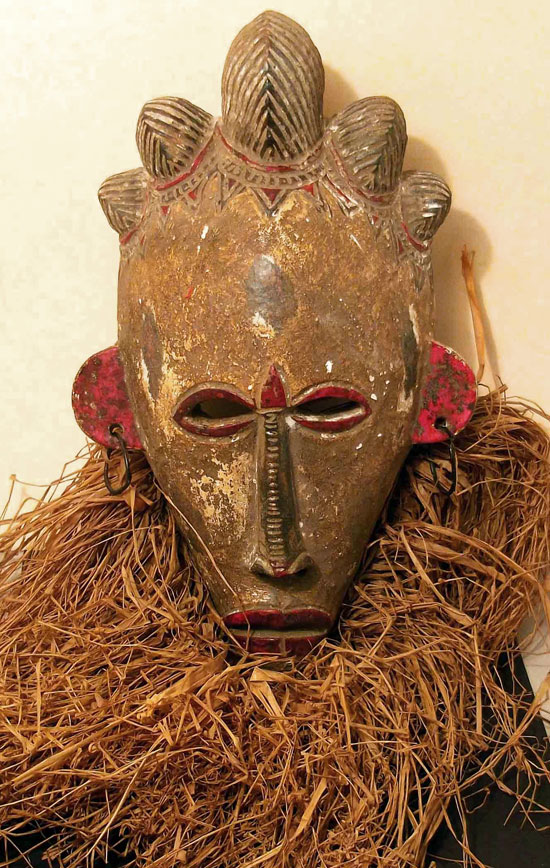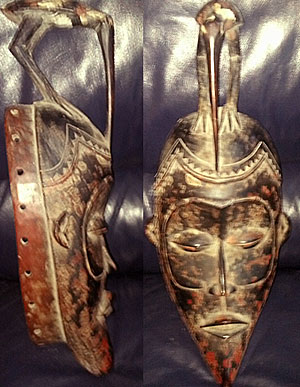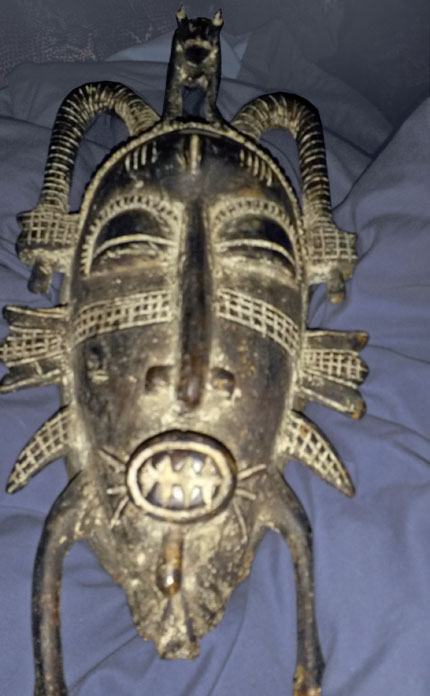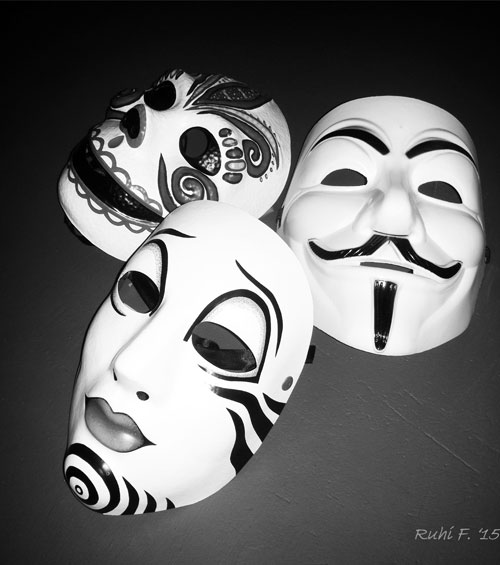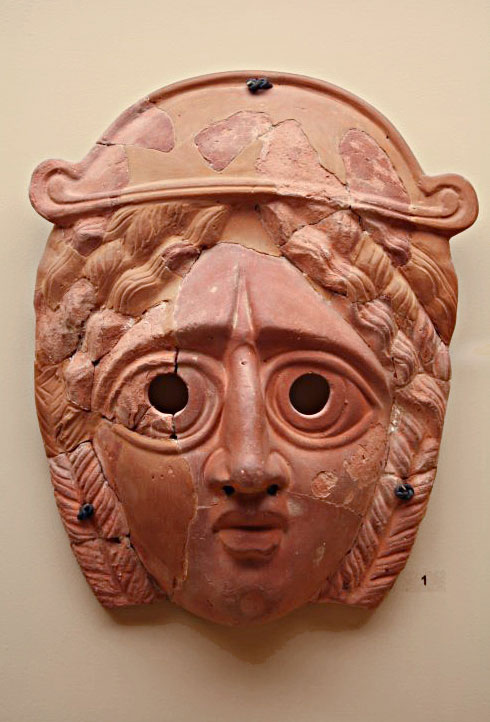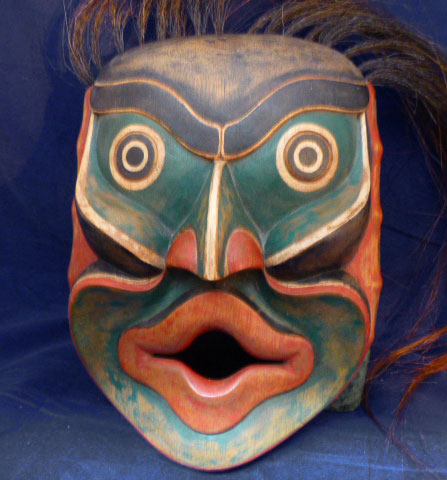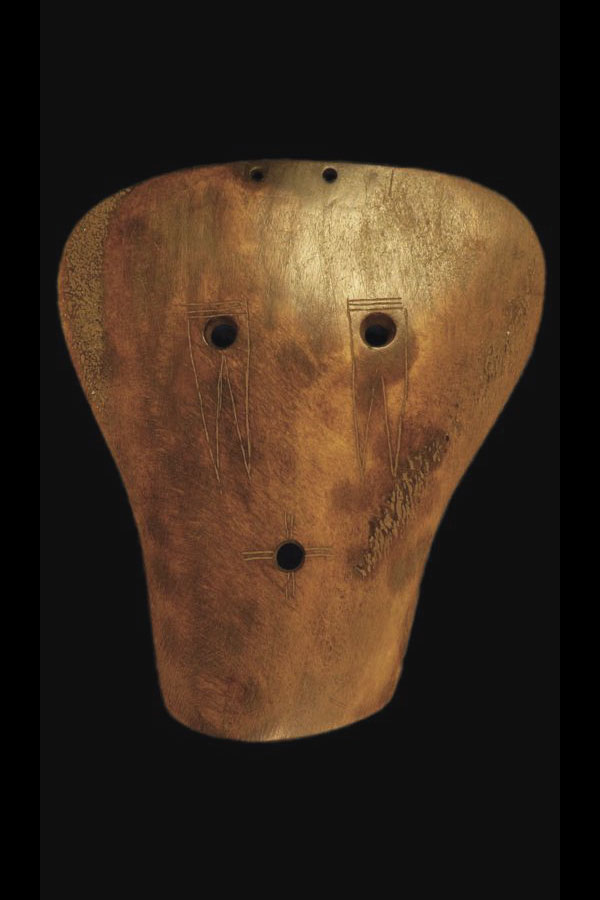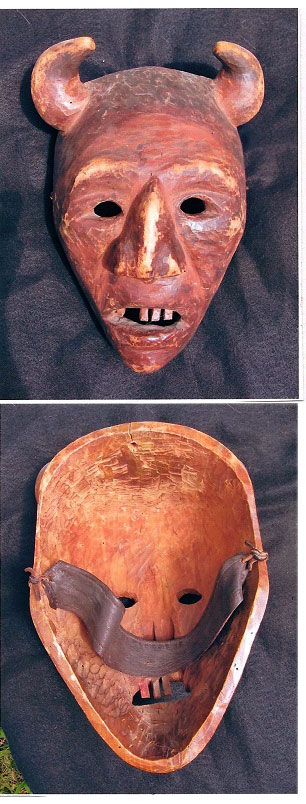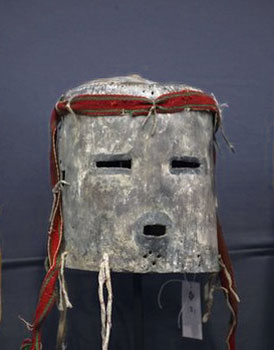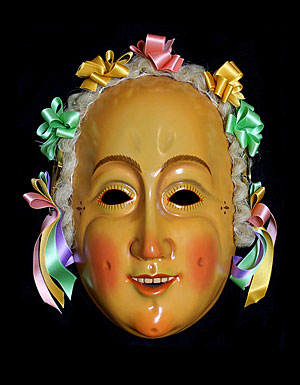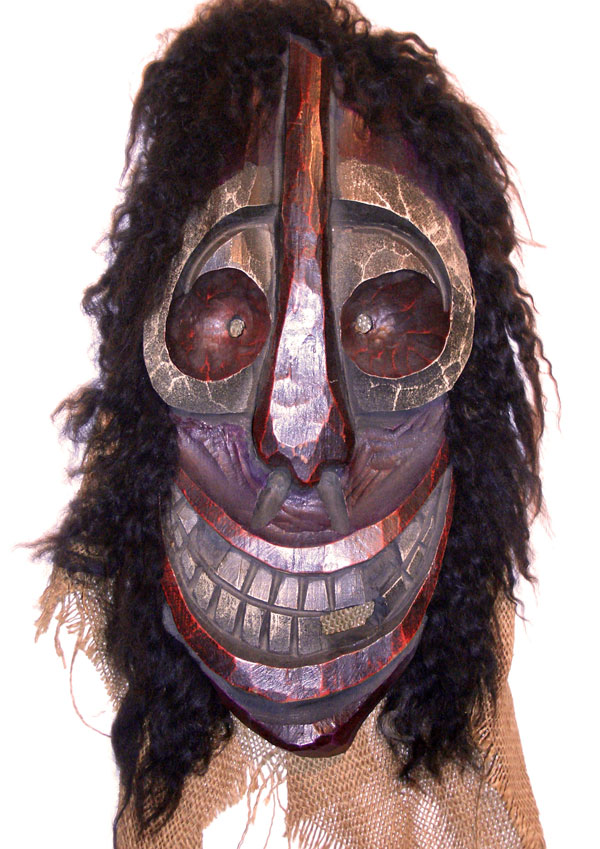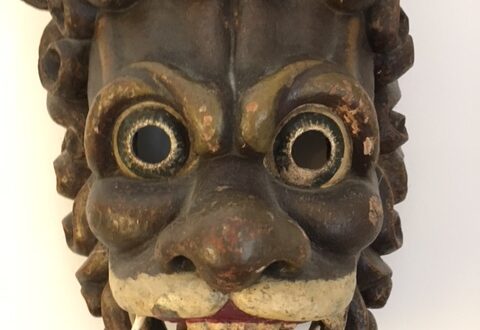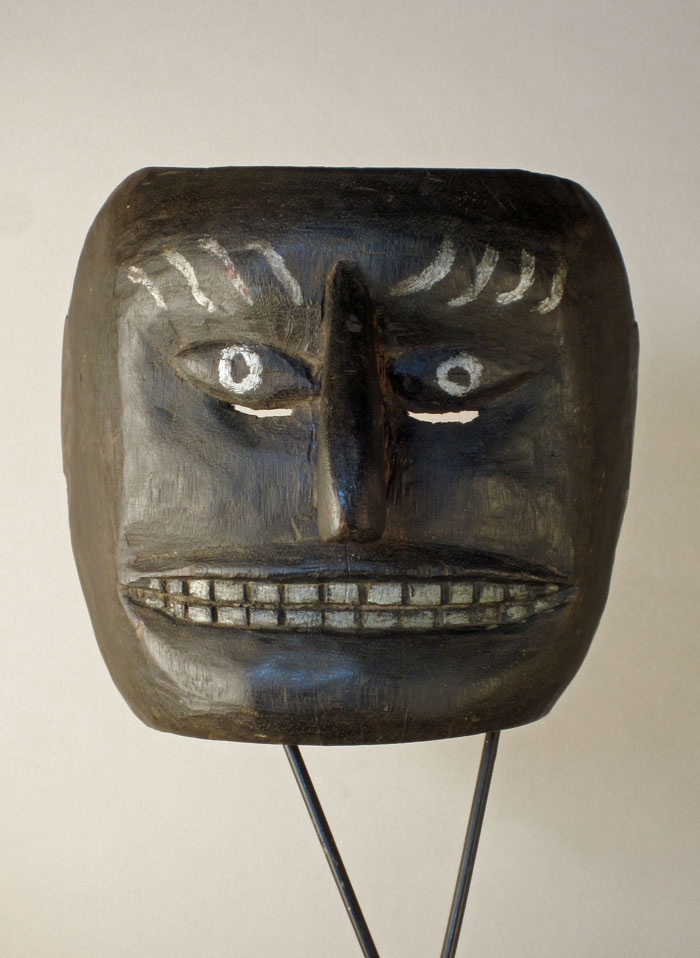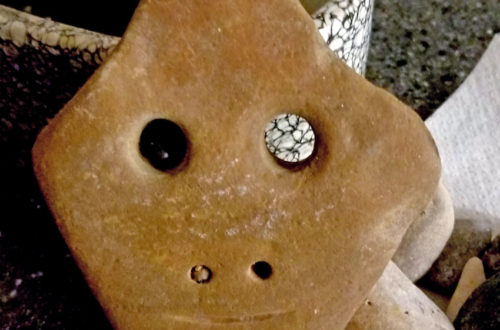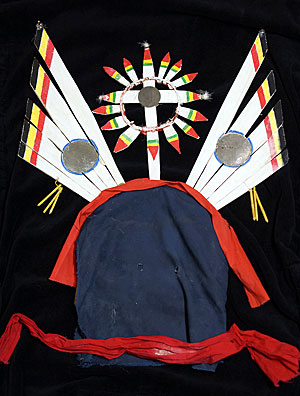Q: I have three masks that my Mom got when working in the Ivory Coast in the 1960’s. I will submit the more outstanding one, the horned and somewhat furry mask. The masks are made out of wood. Do you happen to have more info on this type of mask? Tatjana, 739 A: I’m not a expert on African masks, but the three sharp photos you sent suggest the mask may have been used in culture for celebration or ritual.
-
-
Help Wanted
As usual, the Mask Man has posted answers that aren’t much help to the poor people who sent him pics of their Mystery Mask. I receive several requests per day and I answer all of them, but only post the most interesting ones. Some of those are mysteries to me as well. I need you to write back with a comment. Even a guess would be of some help!
-
Little Borneo mask
Q: I’m doing some research for an elderly friend on some masks she bought in Southeast Asia in the early 1980s. She was particularly interested in the Iban people of Borneo. Some of the masks are quite nice, but this one and another like it, confuse me. They’re both about 24x15x10cm and seem to be carved of ironwood. The weight and the fact that neither have eye or mouth holes make me wonder if they were ever designed for use. Thanks so much for your advice! Sarah, 738 A: I like the way this mask looks, but I can’t pin it down to a particular culture because it is unfamiliar.
-
African woven mask or PNG?
Q: I purchased this basket-woven mask this week at an estate auction in Plainfield, NH, and have no idea of where it is from or its history. Any ideas? Karen, 737 A: At first your woven mask reminded my of a yam ceremony mask from Papua New Guinea, but the structure of the rear looks more like something from central Africa.
-
Mexico or Ecuador?
Q: I purchased this mask at an arts and crafts fair here in Mexico City. I believe it is originally from the state of Michoacan, but it could be from Guerrero or Oaxaca. I am most interested in masks related to devils or death. I attempt to obtain mask that are “bailadas” which means masks that have been used in some sort of festivity or ritual. Carlos, 736 A: Thanks for explaining the types of masks that interest you most. I’d love to see more of them.
-
Small West African mask
Q: Could you please help identify this clay and raffia mask? It measures 15″ including the beard. Thanks very much! Karen, 735 A: Could be from the Guro people of Ivory Coast. I think it shows well, with beautiful colors and a patina that seems old and used. But it is a little small and is made out of clay rather than wood.
-
Little trio of masks
Q: In discussion with a friend, I took a picture of some of the masks on the wall. We were discussing the different origins of Carnival masks. One looks like the Guy Fawkes mask… I think the other a Venice mask? I came across your site, as we were trying to research. I unfortunately do not have detailed and separate photos. I know they are for fun and decorations, but if you could help identify where these masks are from, I would be very grateful. If not, I understand. Ruhi, 734 A: Seeing your photo of three store-bought plastic masks intrigued me.
-
Northwest Coast mask repro
Q: Here are photos of some masks I have picked up in the last 8 months. What do you think about the bird one? Jim, 733 A: The masks you sent all look old and used, but whether they are or not remains to be seen. Interest in collecting NWC masks goes back to the late 19th century. Indians started making masks for sale to tourists way before 1900 and have been doing so ever since.
-
Turnips fly at the Jarramplas Festival
Every January, on Saint Sebastian Day, the streets of Piornal, Spain, fill with residents armed with turnips, seeking to punish the Jarramplas. The Jarramplas is a devil-like character portrayed by a man wearing a costume made from colorful strips of fabric, a frightening mask, and body armor underneath. In a centuries-old tradition, he walks the streets and beats a drum while residents throw turnips at him as a punishment for stealing cattle.
-
Hopi masks returning to America
A charity which bought 24 sacred Native American masks at a controversial Paris auction is to return them to the Hopi and Apache tribes in the US. The US-based Annenberg Foundation said it had spent a total of $530,000 at the auction of masks and other artifacts. Go to this link to see more. http://www.bbc.com/news/world-europe-25331975 I applaud this effort by the Annenberg Foundation.

